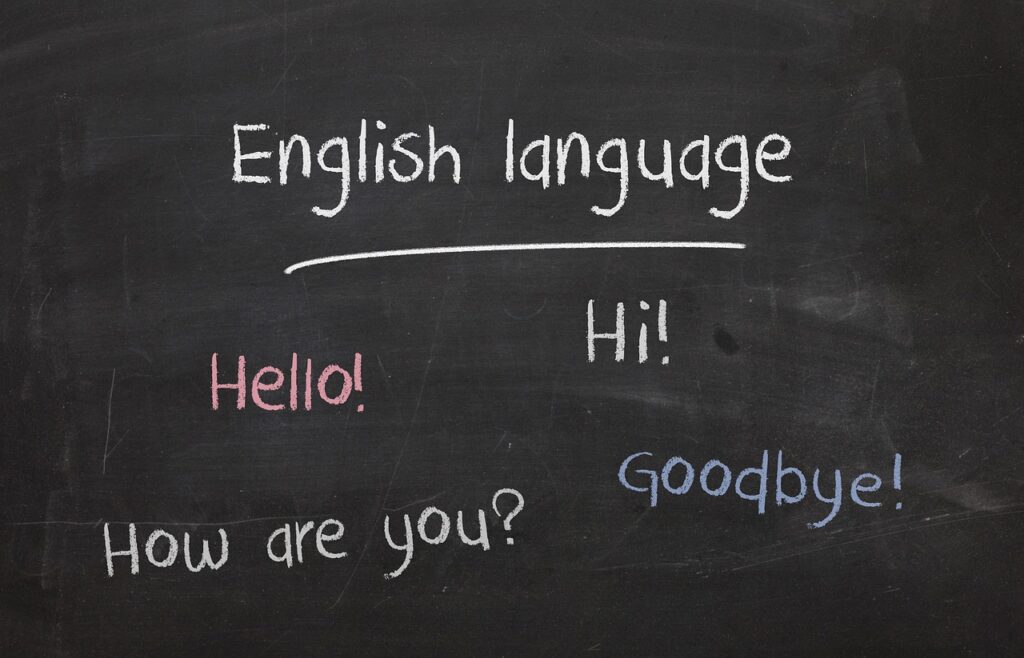Are There Pre-trained AI Models For Different Languages?
Are there pre-trained AI models for different languages? If you are curious about the availability of AI models in various languages, you have come to the right place. In this article, we will explore the world of pre-trained AI models for languages other than English. Let’s dive in and discover the diverse options that exist for different languages around the world.

Understanding Pre-trained AI Models
Before we delve into the specific details of pre-trained AI models for different languages, let’s start by understanding what these models are and how they work. Pre-trained AI models are artificial intelligence models that have been trained on vast amounts of data to perform specific tasks without needing to be trained from scratch.
How Pre-trained AI Models Work
Pre-trained AI models are built using neural networks that are capable of learning patterns and relationships within the data they are trained on. These models are trained using a technique known as transfer learning, where a model trained on one task is adapted to perform a new task without starting from scratch.
These pre-trained AI models are capable of performing a wide range of tasks, such as language translation, text generation, image recognition, and more. The key advantage of pre-trained AI models is that they can be fine-tuned on specific datasets to adapt to different languages and tasks.
Pre-trained AI Models for English
When it comes to pre-trained AI models, English has a vast array of options available due to the availability of large datasets in the language. Models such as GPT-3, BERT, and T5 have been widely used for various natural language processing tasks in English.
Examples of Pre-trained AI Models for English
| Model | Type | Description |
|---|---|---|
| GPT-3 | Language Model | Generative Pre-trained Transformer 3 is one of the largest language models available, with 175 billion parameters. It is known for its ability to generate human-like text. |
| BERT | Language Model | Bidirectional Encoder Representations from Transformers is designed for natural language understanding tasks. It has been widely used for tasks such as text classification and sentiment analysis. |
| T5 | Text-to-Text Transformers | Text-to-Text Transformers is a model that can perform a wide range of natural language processing tasks by converting input and output into text. It has been used for tasks such as translation and summarization. |
Pre-trained AI Models for Different Languages
While the availability of pre-trained AI models in English is abundant, what about other languages? Are there pre-trained AI models for languages that are not as widely spoken? The answer is yes, there are pre-trained AI models available for different languages around the world, although the options may not be as extensive as those in English.
Challenges of Pre-trained AI Models for Different Languages
One of the main challenges when it comes to developing pre-trained AI models for different languages is the lack of large datasets in those languages. Training AI models requires vast amounts of data to learn patterns effectively, and languages with smaller datasets may pose a challenge in this regard.
However, researchers and developers have been working on overcoming these challenges by leveraging techniques such as multilingual training and cross-lingual transfer learning. These approaches allow AI models to learn from multiple languages simultaneously and transfer knowledge across languages.
Multilingual AI Models
Multilingual AI models are designed to handle multiple languages and perform tasks across different language domains. These models are trained on diverse language datasets and are capable of understanding and generating text in multiple languages.
Advantages of Multilingual AI Models
| Advantages of Multilingual AI Models |
|---|
| 1. Versatility: Multilingual AI models can perform tasks in multiple languages, making them versatile for a wide range of applications. |
| 2. Transfer Learning: These models can transfer knowledge across languages, allowing them to adapt to new languages with relative ease. |
| 3. Cost-Effectiveness: Instead of training separate models for each language, multilingual models offer a cost-effective solution for handling multiple languages. |
Multilingual AI models have been increasingly popular in the field of natural language processing due to their ability to handle linguistic diversity and facilitate communication across different language speakers.

Examples of Multilingual AI Models
Several multilingual AI models have been developed to cater to the growing demand for multilingual natural language processing applications. These models cover a wide range of languages and are capable of performing various tasks.
Examples of Multilingual AI Models
| Model | Type | Description |
|---|---|---|
| mBERT | Language Model | Multilingual BERT is a pre-trained model that supports over 100 languages. It has been widely used for cross-lingual tasks such as language understanding and translation. |
| XLM-R | Transformer-based Model | Cross-lingual Language Model Retraining is a transformer-based model that supports over 100 languages. It has been used for tasks such as text classification and named entity recognition. |
| mT5 | Text-to-Text Transformers | Multilingual Text-to-Text Transformers is a model that supports multiple languages for various natural language processing tasks. It has been applied to tasks such as translation, summarization, and question-answering across languages. |
These multilingual AI models have been instrumental in breaking down language barriers and enabling communication and interaction across different linguistic communities.
Pre-trained AI Models for Specific Languages
In addition to multilingual AI models, there are also pre-trained AI models that are specifically designed for individual languages. These models are tailored to handle the linguistic nuances and characteristics of a particular language, making them well-suited for tasks in that language.
Advantages of Language-specific AI Models
| Advantages of Language-specific AI Models |
|---|
| 1. Precision: Language-specific AI models are optimized for a particular language, allowing for greater precision and accuracy in language-related tasks. |
| 2. Cultural Sensitivity: These models are designed to capture the cultural context and nuances of a language, making them suitable for applications that require cultural sensitivity. |
| 3. Task-specific Performance: Language-specific models can outperform multilingual models for tasks that are specific to a particular language, such as sentiment analysis or named entity recognition. |
Language-specific AI models have been developed for a wide range of languages, catering to the linguistic diversity and unique characteristics of different language communities.

Examples of Language-specific AI Models
There are several language-specific AI models available for languages around the world, each designed to cater to the linguistic needs of that particular language community. These models cover a diverse range of languages and are optimized for specific language-related tasks.
Examples of Language-specific AI Models
| Model | Language | Description |
|---|---|---|
| AraBERT | Arabic | AraBERT is a language model specifically designed for the Arabic language. It has been used for tasks such as text classification and sentiment analysis in Arabic. |
| CamemBERT | French | CamemBERT is a model for the French language, developed to handle French text processing tasks. It has been applied to tasks such as translation and summarization in French. |
| RuBERT | Russian | RuBERT is a language model for the Russian language, tailored to perform natural language processing tasks in Russian. It has been used for tasks such as named entity recognition and part-of-speech tagging in Russian. |
These language-specific AI models highlight the importance of catering to the linguistic diversity of various language communities and providing tailored solutions for their language-related needs.
The Future of Pre-trained AI Models for Different Languages
As the field of natural language processing continues to evolve, the development of pre-trained AI models for different languages is expected to grow rapidly. With advancements in multilingual training and cross-lingual transfer learning, researchers and developers are making strides in addressing the challenges of linguistic diversity and expanding the reach of AI technologies to a global audience.
Future Developments in Pre-trained AI Models
The future of pre-trained AI models for different languages holds great promise, with the potential to revolutionize communication and interaction across diverse language communities. Researchers are focusing on developing more efficient and accurate models that can cater to a wider range of languages and tasks.
With the increasing demand for multilingual applications and cross-lingual tasks, the development of advanced pre-trained AI models is crucial for bridging language barriers and fostering greater global connectivity. By leveraging the power of AI technologies, we can facilitate cross-cultural communication and understanding, paving the way for a more inclusive and connected world.
In conclusion, pre-trained AI models for different languages play a pivotal role in advancing natural language processing capabilities and enabling communication across linguistic boundaries. Whether it’s through multilingual models that support multiple languages or language-specific models optimized for individual languages, the diverse options available cater to the linguistic diversity of language communities worldwide. As we look towards the future, the development of pre-trained AI models for different languages holds the key to breaking down language barriers and fostering greater global connectivity through the power of artificial intelligence.


Comments are closed